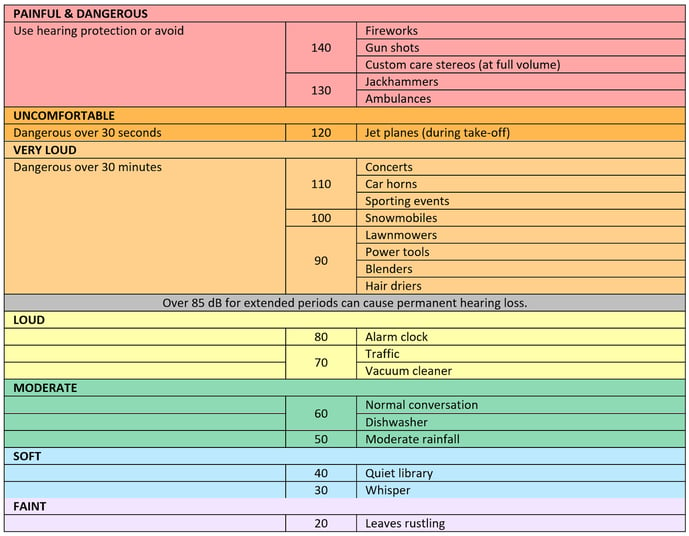Sound and acoustics can be difficult to understand, with the subject of acoustics even having a shimmer of mystery surrounding it. For example, in the acoustic world does 0 plus 0 really equal 3? Our perception of sound is highly subjective and what one thinks is a noisy environment, another may think is a perfectly ok. Let’s dive into the world of acoustics!
In addition, sound levels and requirements are reported differently, which can create confusion even for the most well-read. Units like dB (A), NR, NC, dB (C), Lp (A), LpAeq, etc. are all used in the world of acoustics making it hard to know the difference.
To make it more complicated, sound is also broken down and reported in specific frequency bands. Knowledge of reverberation times is also important for room noise, along with the function of the room.
Putting sound on the agenda
Maybe all these, sometimes confusing, factors are the reasons to why we don’t discuss sound and noise as often as for example temperature? Most of us are very good at relating to temperature and how it is experienced, even if this is also highly subjective between us. Talking about weather and wind is a natural part of our everyday lives. If we know it's going to be 15 degrees Celsius tomorrow we understand what that means and we can plan our outfit based on that to stay comfortable.
We simply need to talk more about sound and remove any shimmer of mystery! The sound climate is a very important part of our everyday lives and an essential cornerstone within the concept of IEQ and our well-being. Read more about the importance of IEQ in or blog here, and why you should eliminate monotonous noice here.
Let’s start by looking at a table to get a good overview of what different levels of Decibel mean:

If we look at buildings and new constructions, sound requirements are generally well specified - even if harmonization would be useful and desirable between countries, as they can differ.
Some examples of requirements for the maximum equivalent
sound level from installations in residential buildings in Sweden

If we are to generalize requirements from the table above, the total continuous sound level should not be much more than the level of a whisper, which is reasonable as it is a continuous sound we are exposed to. This requires suppliers of ventilation for example to always have sound/acoustics as a central point in their product development and reporting of their products. In addition, it is also important for suppliers to provide calculations of sound that their product can create..
Unlocking the sound mystery
Now back to our initial question, does 0 plus 0 equal 3? Most of us know (or think) that it equals 0. In some cases however, this is actually not true! We have to think a little differently regarding sound as we have adapted a very large range to Decibel through logarithmic calculations. When adding two equal sound sources, the main rule is that it increases by 3 dB. 0 dB is actually also a sound that corresponds to a pressure difference of 20 uPa (micro pascal) and is the level at which a young healthy ear begins to perceive sound, also called the hearing threshold. So when adding two sound sources, both with sound levels of 0 dB, the answer will be 3 dB.
So yes, in the acoustic world 0 plus 0 really does equal 3.
Whether you perceive acoustics to be complicated or not – we need to discuss and pay attention to it as it is a corner stone of IEQ, and an important part of our daily life and well-being.
If you would like to read more about acoustic click here.
Please contact Swegon if you need more information on acoustics. Acoustics is an essential part of our product development, we have a great range of acoustic products and we have several software supporting acoustics calculations.





-Aug-16-2023-12-30-41-3641-PM.png?width=75&name=MicrosoftTeams-image%20(3)-Aug-16-2023-12-30-41-3641-PM.png)






.jpg?width=75&name=sigvardsson_220628_0008_small_webb%20(1).jpg)












.jpg?width=75&name=magnus%20andersson_550x550%20(1).jpg)











-4.png?width=75&name=MicrosoftTeams-image%20(3)-4.png)











